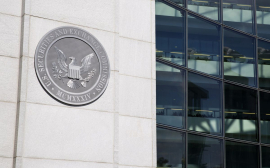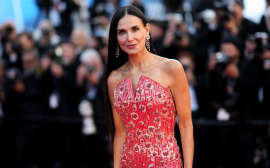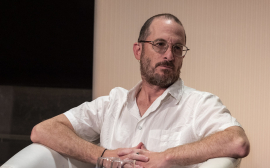Description
Central Park in New York is one of the largest in the United States and the most famous in the world. The park is located on Manhattan Island between 59th and 110th Streets and Fifth and Eighth Avenues and has a rectangular shape. The park is about 4 kilometers long, about 800 meters wide, and its total area is 3.41 km². The park is visited by approximately 25 million people a year, it is the most visited park in the United States, and its screening in many films and television shows has made the park one of the most famous in the world. The park is maintained by the Central Park Conservation Committee, a private, non-profit organization that operates the park under contract with the New York City Department of Parks and Recreation.
The park was designed by architects Frederick Olmsted and Calvert Vox. The latter later founded the large Prospect Park in Brooklyn. Despite the fact that the park looks very natural, almost all landscapes are created by hand. The park has several artificial lakes, a large number of alleys, two ice rinks, "untouched wilderness" corners and lawns used for various sports, as well as children's playgrounds and its own zoo. The park is visited by migratory birds and is therefore very popular with birdwatchers. The 10-kilometer road that surrounds the park is often used by runners, cyclists and inline skaters, especially on weekends and after 7pm when car traffic is prohibited. Central Park is often referred to as the green lungs of Manhattan.
Being the largest on the island of Manhattan, Central Park is several times smaller than the largest park in the city - Pelem Bay Park, located in the Bronx.
The history of the park
In the 60s and 70s of the twentieth century, mass public events of a cultural and political nature began to be held in the park. In June 1962, a production of The Merchant of Venice with George Scott as Shylock took place at the Delacorte Theatre, marking the beginning of the tradition of the annual Shakespeare Festival. The Great Lawn has become a venue for various festivals, fairs and free concerts, including classical music performers: the New York Philharmonic Orchestra and the Metropolitan Opera. Especially popular were the performances of pop stars of the first magnitude: for example, the concert of Barbra Streisand in May 1967. In the second half of the 60s, Central Park became the center of protests against the Vietnam War: in particular, thousands of actions were held in March 1966 and April 1967.
In general, the administration's policies have undergone significant changes since Thomas Hoving (1966-1967) and August Heckscher II (1967-1972) took office as the head of the New York City Parks Department. The new leaders not only did not interfere with the organization of mass events, but also in every possible way contributed to their holding; ethnic holidays and meetings of interest on the territory of the recreation area became commonplace. The rules of conduct were further simplified: the ban on exposing the torso and the requirement for a mandatory license for commercial artists were removed, obtaining other permits (for street musicians, etc.). P.) became a formality. The call for all segments of the population to socialize in the park, called by the New York Times "a pleasure for everyone", led to the emergence of numerous informal hangouts: hippies, yippies, fans of alternative music and supporters of non-traditional sexual relations. Marijuana sales and loud boombox music became common in the alleys.
The change of priorities had a negative impact on the state of the park itself. As Douglas Blonsky, the first president of the new management organization Central Park Conservancy, recalled, "years of mismanagement and inadequate maintenance have turned a masterpiece of landscape architecture into a dusty cauldron by day and a dangerous territory by night." By the end of the decade, the steps and piers of the Bethesda Terrace were covered in graffiti, the Sheep Meadow lawn resembled a trampled field, the Belvedere Castle was closed due to repeated vandalism, beer cans were floating in the pond. The situation was aggravated by the budget crisis of the 1970s, when many New York City employees lost their jobs and the authorities redirected budget funds to other needs.
Public-private partnership
In 1980, when the non-profit organization Central Park Conservancy joined the next renovation and administration, a new era began for the park. In addition to the city budget, money from sponsors, including large multinational corporations stationed in New York and residents of surrounding homes, began to be actively attracted. The zoo was rebuilt and became a paid zoo, and the Zoological Society of New York (now the Wildlife Conservation Society) took over its management. The Wallman Rink also passed into private hands: its reconstruction and subsequent maintenance was taken up by the entrepreneur and future US President Donald Trump. Holding mass events on the Great Lawn was sharply restricted: various festivals were stopped and the number of concerts of pop and rock musicians was reduced.
The Central Park Conservancy has set itself the goal of reviving the creation of its creators in its original form, while preserving some of the innovations of Moses. In 1987, 1993 and 2008, campaigns were conducted to attract private funds, and more than 1,900 volunteers took part in the restoration work. By the beginning of the 90s, landscaping was done, the Bethesda Terrace, the Belvedere Castle and the chess and checkers house were restored. Some buildings have changed their original purpose: for example, the Dairy ice cream pavilion was converted into a guest center. One of the innovations of this period is the John Lennon memorial "Strawberry Fields" (1985), created on the initiative and with the money of Yoko Ono near the place of the death of the musician. In 1987, a small pond near Belvedere Castle-the only remaining trace of the aqueduct reservoir filled in in the 1930s-received its modern name Turtle Pond (literally "turtle pond"). In the nineties, the pond and the adjacent Great Lawn underwent extensive restoration. At the same time, the esplanade Mall, the Harlem Meer pond, and the valley of the man-made creek The Loch in the northern part of the park were restored.
Restoration work of various objects continued in the noughties.
Background
From 1820 to 1850, the population of New York City more than quadrupled, breaking the half-million mark. The city, based on the southern tip of Manhattan, expanded rapidly, and secluded recreational areas were dwindling. The idea of creating a public recreation area, contrary to the town-planning plan, originated long before the formation of the park. Back in 1844, poet and publisher of the Evening Post (now the New York Post) William Bryant argued that “commercial activity is consuming the coast of the island inch by inch, and if we want to save any part of it for health and recreation, we must. right now". The well-known landscape designer Andrew Downing also spoke in favor of such a place: “a large and accessible park, although it will require funds, will at the same time ennoble, make a cultural national character, foster a love of rural beauty ... in such a park, residents will ride carts, riding on horses ... and for a while they will forget the rumble of the pavement and the dazzling shine of the brick walls. "
A stylish place to walk, like the Bois de Boulogne in Paris or Hyde Park in London, has been in demand by many influential New Yorkers. At the same time, according to the authors of the book on the history of the park, Roy Rosenzweig and Elizabeth Blackmar, the wealthy citizens who promoted the project pursued not only public but also commercial interests. According to the initiators' plan, the park was supposed to be located on the banks of the East River on the territory of the Jones Wood farm (now the Upper East Side), but the city council, after six months of consideration, declared this site too small for New York. Instead, the council proposed another rectangular site between Sixth and Eighth Avenues, 59th and 106th Streets in the center of the island, which is almost 5 times the size of the farm on the East River. The choice was facilitated by the difficult terrain with rocky ledges, not very suitable for construction and economic use, which was reflected in the value of the land.
Organizational solutions
In July 1853, the New York State Legislature voted in favor of a deed to expropriate 778 acres (3.1 km²) of private property for the park; it was planned to spend more than $ 5 million on compensation to the owners.
This decision, although it was a necessary formality, still did not put an end to the fate of Central Park: soon after it, the US economy began to experience difficulties, and in 1854-1855 New York experienced a period of recession. As a result, the city authorities were faced with the issue of not increasing, but decreasing the previously approved site or even relocating it. In 1855, the newly elected mayor, Fernando Vood, even had to veto a bill from the city council.
Before the start of construction, it was necessary to evict local residents, the overwhelming majority of whom rented housing, lived relatively poorly and performed unskilled work. About 90% of the population identified themselves as African Americans or immigrants from Ireland and Germany. The park was characterized by small one-story settlements with their own churches and schools: Seneca Village, Harsenville, Piggery District. In total, according to the law, about 1600 residents were evicted, all buildings were demolished.
In April 1857, the Board of Commissioners was formed, which soon announced a landscape design competition for the future recreation area. In addition to the requirement to preserve several roads from one end of the park to the other, its mandatory attributes were also listed: one front entrance and three playgrounds, a large fountain, a concert or exhibition pavilion, a panoramic tower and a classic garden. In addition, it was proposed to pay attention to the cemeteries of Mount Oborn and Green Wood, immersed in greenery, which set the fashion for idyllic, naturalistic landscapes. 33 works were submitted for the competition, almost all of which, in addition to natural landscapes, included monumental architectural elements such as a large exhibition hall, a multi-meter shooting range or an amphitheater.
Olmsted and Vox project
Competition winners Frederick Olmsted and Calvert Vox presented their project called "Greensward" in March 1858. In general, this work followed the traditions of the English park with its natural naturalism. The elements of the cityscape have been kept to a minimum. Through traffic had to be cleared into driveways lowered below ground level, the sides of which had to be covered with dense bushes and fenced in order not to spoil the impression of the countryside. Closed winding paths appeared on the map, along which lawns framed by tall trees, rocky cliffs, lakes with wooded islands, and wooded hills replaced each other. The authors proposed to make the main square in the form of a wide lawn, to create the entrances to the park as democratic as possible.
The front, official part is a wide, shady esplanade diagonally across the park, ending with a two-tiered terrace and a fountain. As conceived by Olmsted and Vox, only on the avenues of the esplanade and at the entrances to the park could there be sculptural compositions. It was planned to build a music hall and an adjacent greenhouse next to the esplanade, as well as to break a flower garden. On a high cliff, known as Vista Rock, it was proposed to put a low observation tower. In those years, to the north of the cliff, there was an aqueduct drainage basin, the water of which was planned to be supplied to several man-made reservoirs, including a pond in the southern part of the park, a lake to the north of the terrace and a new reservoir. The catchment itself, according to the authors, was not of interest from an aesthetic point of view, and the authors did not plan to draw attention to it. In the northern part of the park, it was proposed to set up an arboretum and build a botanical museum. The plan involved the construction of nine bridges, one of which was to be made of stone.
The appearance of the park was influenced by several designs. Olmsted was impressed by Birkenhead Park near Liverpool, where he visited in 1850; in this recreation area there were no open views at the end of the alleys and generally straight paths, but there were picturesque ponds, rare trees, meadows, steep hills and winding paths. When organizing traffic along the alleys, the authors of the project referred to similar solutions in the Vienna Prater and the Parisian Bois de Boulogne, the road barriers were copied from London's Regent's Park.
Building
Frederick Olmsted, who took over as Park Superintendent in 1857, was named Architect-in-Chief after the competition was approved; Calvert Vox took over as Assistant to the Architect-in-Chief.
Vox's main tasks included the architectural design of various structures, including bridges, pavilions and boat stations, while Olmsted was responsible for landscape design and the artistic, aesthetic perception of the territory as a whole. Architect Jacob Mold, landscaping master Ignats Pilat, hydraulic engineer George Waring, politician and member of the Board of Commissioners Andrew Green made a great contribution to the arrangement of the recreation area.
Construction of the park lasted from 1858 to 1873, when it was officially opened. In relief, its territory was originally stony hills combined with swamps and marshes. The soil cover was not suitable for many of the plants provided for in the plan, and therefore was removed and taken out of the city. In its place, more than 7 million m³ of fertile land was transported from Long Island and New Jersey. Most of the rocks were blown up, which required about 250 tons of gunpowder - more than at the Battle of Gettysburg. To create optimal humidity, a drainage system was created, which took about 9.5 km of ceramic tiles. The landscape underwent significant transformations: in some places the land was leveled, in others it rose or, conversely, fell. 270 thousand trees and shrubs were planted. Even at the cleaning stage, it became obvious that construction costs would exceed the planned budget by at least three times; Ultimately, the cost overruns were reflected in personnel changes: in 1862, the management of the park passed to Andrew Green, who previously served as the chief controller.
The park was opened in stages, as the sites were ready. The first facility open to the public was a skating rink on the lake, built in 1858. By the end of 1860, one could admire the pond in the southeastern corner, stroll along the Mall esplanade and other arched bridge alleys south of 79th Street. In 1863, the territory of the entire recreation area was enlarged due to a new section between 106th and 110th streets; the total area reached 843 acres (3.1 km²). During the Civil War (1861-1865), construction quieted down, a hospital was housed in the administrative building of the Council of Commissioners, among the buildings of this period was the Ladies Refreshment Salon (1864) instead of the planned music hall. After the war, most of the architectural structures were built, including the Belvedere castle (1869), the pavilions of mineral waters (Mineral Springs pavilion, 1869) and dairy products (Dairy, 1871), the carousel (1871), the Bethesda fountain (1873). In 1865, the park's attendance rose to 7 million people a year.
The completed park revealed structural changes to the original plan. The paths were divided separately for pedestrians, riding and recreational vehicles, and thanks to the interchanges, they did not intersect anywhere. As a result, the number of bridges increased from 9 to 34, most of the wooden buildings were replaced with more modern ones. Each bridge had a unique architecture, from simple slate and granite to delicate neo-Gothic lace.
Socialization
In the early years, visitors to the park were mainly wealthy New Yorkers, who had not only free time, but also horse-drawn carriages for walks. Sundays looked a little more lively, when some of the visitors came on foot to not only enjoy nature, but also go ice skating or boating. During the construction phase, the park, among other things, was advertised as a place for sports, but after its completion, the administration did not give permission to numerous clubs to organize competitions in the then popular cricket and baseball. The already built three playgrounds were given to high school students for extracurricular physical education. But from the very beginning, boat, carriage and wheelchair rental services were provided; a photo studio was opened on the esplanade. For children, it was planned to ride a donkey and a pony, in a goat sled, as well as on a carousel.
The Greensward plan did not include the construction of a zoo, although such a proposal was received at the stage of discussion and was present in other competitive works. The menagerie arose spontaneously at the expense of animals donated by the inhabitants of the city. In the early 1860s, a corral near the esplanade was equipped for deer, eagles and monkeys, and in 1865, in connection with the replenishment of the collection of animals, cages were constructed in the Arsenal building. In 1870, the menagerie, having received the status of an official institution of the Central Park, moved to new, specially equipped premises near the rear facade of the Arsenal. The building itself houses an exhibition of the newly formed Museum of Natural History. In the 1870s, the history of another world famous institution began - the Metropolitan Museum of Art. The art collection was originally exhibited at the Dodworth Building on Fifth Avenue, until it moved to a newly constructed building in Central Park at the 82nd Street alignment in 1880.
In the 1880s, cultural recreation became more diverse due to the demands of wide sections of the population, including the working class. On Sundays, entertainments previously inaccessible to many are allowed: boating, pony and goat carriage rides; the bans on trading stalls are lifted. The first Sunday concerts were held in the previous decade, and in 1884 all previously imposed restrictions on them were finally removed. Lawns were opened for sports - temporary tennis courts appeared, competitions in archery, American football and lacrosse began to be held. Bicycles and rollerblades were allowed in some of the alleys.
In 1899, a greenhouse, conceived by Olmsted and Vox, was built opposite 105th Street, later transformed into the Conservatory Garden. By 1912, the gravelled vehicle tracks were asphalted, adding football, hockey, baseball and cricket to the team games allowed on lawns. There was a request for a fenced-in play area, and in 1926 the first and by far the largest playground, the Heckscher Playground, opened. In 1929, the "ladies' buffet" was transformed into the Casino restaurant and nightclub, which quickly became one of the most fashionable in New York.
Reconstruction of Moses
Back in the 70s of the XIX century, when the construction was just completed, the park began to fade, many natural and architectural objects, according to Olmsted, acquired a "sloppy" look. Lawns lost their grassy cover, turning into trampled fields. On the contrary, the alleys were covered with debris and overgrown with grass. The dead plants were not cleaned for a long time, some bridges required repair, some of the benches lay overturned. Several key factors have contributed to the degradation of the recreation area, including the liberalization of rules of conduct (removal of numerous bans), increased attendance and insufficient funding. In the 20th century, air pollution from exhaust gases and coal processing products was added to the negative factors. On the eve of the First World War, the already meager budget was cut in half and returned to its previous values only by the end of the 1920s. The deplorable state persisted for several decades and began to change for the better only with the onset of the Great Depression, when labor costs plummeted and federal grants appeared.
In 1934, the new mayor, Fiorello La Guardia, united the 5 departments related to the city parks and appointed Robert Moses to be in charge of putting them in order. As head of the NYC Parks Commissioner, Moses redefined what was truly out of date and out of fashion. Unlike the founding fathers, he considered parks as active recreation areas with a developed system of recreational facilities: tennis courts, swimming pools, baseball fields, playgrounds. Actively using the funds allocated by Washington, over the course of several years of work, he built more than twenty new play and sports grounds, repaired alleys and bridges, re-greened lawns, and replaced diseased and dead plants with new ones. The most significant pre-war structures in Moses are the wide Great Lawn with bowling, shuffleboard and cricket grounds at the site of a destroyed water basin, and a new zoo. In the second case, the institution received a permanent place of registration and a modern name, the animals moved from wooden barracks to spacious stone buildings. Under Moses, the now infamous Casino restaurant and nightclub was destroyed; a playground was set up in its place. At the other end of the park, a new restaurant, Tavern on the Green, opened in 1934 on the site of Mold's sheepfold.
Before the outbreak of World War II, Central Park was strikingly different from itself at the beginning of the century - it hosted numerous festivals, carnivals, sports and cultural events. Various circles worked, ranging from amateur photography and card games, and ending with aircraft modeling. In the postwar years, when the flow of federal funds stopped, Moses began to attract money from sponsors, in return promising them to immortalize their names in titles and on commemorative plaques; this is how two new boating stations were built, the Wallman Rink ice rink, the Lasker Rink ice rink and pool, Michael Friedsham's carousel, the Delacorte outdoor theater, a chess and checkers house, and two sports grounds.
"Pleasure for everyone"
In the 60s and 70s of the twentieth century, mass public events of a cultural and political nature began to be held in the park. In June 1962, a production of The Merchant of Venice with George Scott as Shylock took place at the Delacorte Theatre, marking the beginning of the tradition of the annual Shakespeare Festival. The Great Lawn has become a venue for various festivals, fairs and free concerts, including classical music performers: the New York Philharmonic Orchestra and the Metropolitan Opera. Especially popular were the performances of pop stars of the first magnitude: for example, the concert of Barbra Streisand in May 1967. In the second half of the 60s, Central Park became the center of protests against the Vietnam War: in particular, thousands of actions were held in March 1966 and April 1967.
Overall, the administration's policies have undergone significant changes since the New York City Parks Department's Thomas Hoving (1966-1967) and August Heckscher II (1967-1972) took office. The new leaders not only did not interfere with the organization of mass events, but also in every possible way contributed to their holding; ethnic holidays and meetings of interest on the territory of the recreation area became commonplace. The rules of conduct were further simplified: the ban on exposing the torso and the requirement for a mandatory license for commercial artists were removed, and obtaining other permits (for street musicians, etc.) became a formality. The call for all segments of the population to socialize in the park, called by the New York Times "a pleasure for everyone", led to the emergence of numerous informal hangouts: hippies, yippies, fans of alternative music and supporters of non-traditional sexual relations. Marijuana sales and loud boombox music became common in the alleys.
The change of priorities had a negative impact on the state of the park itself. As Douglas Blonsky, the first president of the new Central Park Conservancy, recalled, " years of mismanagement and inadequate maintenance have turned a masterpiece of landscape architecture into a dusty cauldron by day and a dangerous territory by night." By the end of the decade, the steps and piers of the Bethesda Terrace were covered in graffiti, the Sheep Meadow lawn resembled a trampled field, the Belvedere Castle was closed due to repeated vandalism, beer cans were floating in the pond. The situation was aggravated by the budget crisis of the 1970s, when many New York City employees lost their jobs and the authorities redirected budget funds to other needs.
Public-private partnership
In 1980, when the non-profit organization Central Park Conservancy joined the next renovation and administration, a new era began for the park. In addition to the city budget, money from sponsors, including large multinational corporations stationed in New York and residents of surrounding homes, began to be actively attracted. The zoo was rebuilt and became a paid zoo, and the Zoological Society of New York (now the Wildlife Conservation Society) took over its management. The Wallman Rink also passed into private hands: its reconstruction and subsequent maintenance was taken up by the entrepreneur and future US President Donald Trump. Holding mass events on the Great Lawn was sharply restricted: various festivals were stopped and the number of concerts of pop and rock musicians was reduced.
The Central Park Conservancy has set itself the goal of reviving the creation of its creators in its original form, while preserving some of the innovations of Moses. In 1987, 1993 and 2008, campaigns were conducted to attract private funds, and more than 1,900 volunteers took part in the restoration work. By the beginning of the 90s, landscaping was done, the Bethesda Terrace, the Belvedere Castle and the chess and checkers house were restored. Some buildings have changed their original purpose: for example, the Dairy ice cream pavilion was converted into a guest center. One of the innovations of this period is the John Lennon memorial "Strawberry Fields" (1985), created on the initiative and with the money of Yoko Ono near the place of the death of the musician. In 1987, a small pond near Belvedere Castle-the only remaining trace of the aqueduct reservoir filled in in the 1930s-received its modern name Turtle Pond (literally "turtle pond"). In the nineties, the pond and the adjacent Great Lawn underwent extensive restoration. At the same time, the esplanade Mall, the Harlem Meer pond, and the valley of the man-made creek The Loch in the northern part of the park were restored.
Restoration work of various objects continued in the noughties.
























